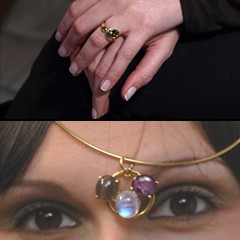
Sometimes the yellow sapphire tends towards an orange coloring; in this case it takes on the odd “Padparaska” name, and is a very rare stone. We must be very careful about the naturalness of its coloration
The aluminum sesquioxide (Al2O3), known as “corundum“, is theoretically colorless. Minimum traces of other elements – which do not appear on the chemical formula – are sufficient for it to take other, even showy, colorations. So a bit of trivalent iron or a hint of chromium are the cause of the blue of the sapphire, or of the red of the ruby. Traces of other elements will make the colors yellow, orange, violet, green, pink, light lavender, gray, etc. There are different opinions on how to name the corundum that is other than the red and the blue. Anglo-Saxons call them “yellow sapphire; orange sapphire; pink sapphire or pink ruby; violet sapphire”, and so on. In Europe, some say that the words “sapphire” and “ruby” meaning all shades of blue and red (provided you do not verge on the azure and pink!). But yellow, violet, green, will have to be called ‘yellow corundum; purple corundum; green corundum’.

Color series; sapphire palettes
We take advantage of this “controversy”, to dive to its core; from time to time, it is pleasing to debate on innocent things; a lot is said on the sex of angels, why not discourse on innocent names to be given to colored “corundum”? And we will see that those who argue that it is incorrect to say “yellow sapphire”, will find themselves embarrassed in front of blue stones with yellow traces (or yellow ones with blue traces).
Or in front of stones so clear that they border into colorless; without considering that the threshold after which a “pink corundum” becomes ruby, is really weak and indefinite. Some put it amiably so: “these stones are pink sapphires when they are bought, pink rubies when they are sold.” Some have even tried to assign each color a number. It is like trying to put a name to every point, or give an adjective to every grain of sand. It was also said that if the red color depends on chromium, we find ourselves in front of a ruby, while if the color depends on the trivalent iron, we will have a red or pink corundum.
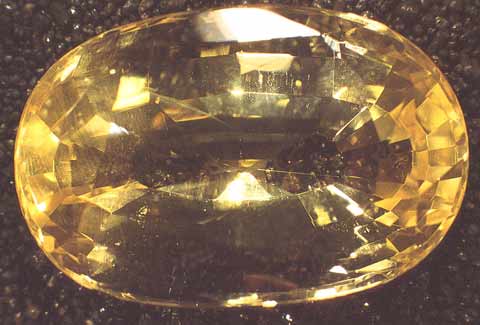
Splendid yellow sapphire of more than 18 ct
Of course, Sri Lanka stones have both trivalent iron, and chromium, just to complicate things. But here we are only at the beginning. Corundum has the awkward attitude of power of changing color! With appropriate chemical, physical, nuclear tricks, one can, in the lab, turn to blue stones that were yellowish or milky, or transform grayish colors into orange-white ones. So, after the transformation, stones that were “whitish corundum” will be given the title of “natural blue sapphire”. It is clear that we are immersed in a problem that is not just about words. Color is not a quantitative feature, but a qualitative one, and as such escapes classification rules that are too strict.
Therewith, if one wants to call “violet corundum” the stone which we call “violet sapphire”, they can do so with peace of mind, even though, usually violet sapphires are not always violet! If you look at them in daylight, they are blue, and they become violet under artificial light, so much for those with a number per color.
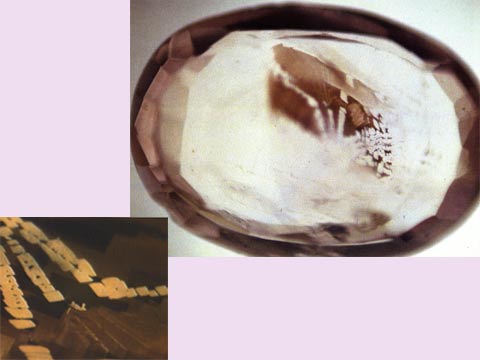
“2001 Space Odyssey”-like inclusion in a light violet sapphire with an enlarged detail of the same stone.
Colored sapphires can be found in ten thousand different colors. ( “Ten Thousand” is, of course, to be understood with the meaning of the alchemical “tetractys” of good old Pythagoras: 10.000 = (1 + 2 + 3 + 4)4. This shift to larger than a third in the number filed, means precisely an “exceeding the quantity and the very concept of the number itself”). And this unlimited variety of colors, which is manifested by a relatively simple material and with a few trace elements, is a source of pleasure and serene meditation. Regarding the issue of the passage to the fourth dimension: we will come back to this, on many other occasions.
There are no two identical stones on earth; why do we have to look for two identical colors between them? Every stone, every color, every nuance has its individuality, and it is only by respecting this indefinite variety of ways in which nature loves to express itself that we will be awarded the right to be respected ourselves. But if we try to enslave nature to our desires, if we try to dominate it, to transform it according to our interests, we will have the illusion of having won, to have made a profit, while in reality we will have lost a lot. So this is what happens when one wants stones with the same color, since it would be impossible with natural colors; they are standardized with artifices, yielding “semi-natural” natural stones, and creating objects that are all equal to each other, incapable of giving emotions that go beyond their mere form.
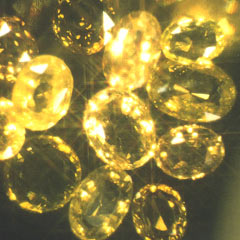
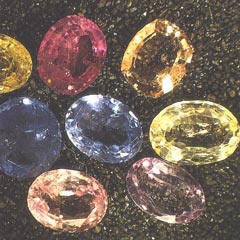
We are on the side of the stones. We are for the natural colors. We are for stones that are all different among them. We are for objects that emphasize the personality inherent in every single stone. We are for stones intended as intermediaries between the mineral and the emotional worlds; between us, the dust and the stars. We are for good-luck charm stones-amulets, channels of subtle energies which permeate everything and corresponding to all, and through them we want to be able to “communicate”.
We are for colors, for the ten thousand colors of precious stones, and for the light that plays inside them, composing new symphonies of colors and new stories and new vibrations and new emotions. We are for all the natural stones, because only in them we can hope to resonate our “naturalness”, with the ancient stone that is in us, much older than the same precious stone that we have in front of us.
Because the spark that we hand on, one generation to the next, is the echo of that first, huge spark that was the “Fiat Lux” the beginning of time, and that every so often, seems dormant in us. But we can rekindle the fire, the electricity, the excitement; the gleam of those little colored sparks which crackle in the pulsing heart of that blood-red ruby, which whisper in the sapphire-blue velvet, which sing jubilant in the red glow of the clear waters of the azure sapphire, which sparkle in the sun of the yellow sapphire, which do an innuendo in the apricot color of that padparaska, which gawk at the wisteria of that violet sapphire, which ignite with magic in the mysterious rays of the star sapphire, which dream and fade into delicate periwinkle, pale pink, watered pale blue, ocher, gray, green-blue, which………
Specifications
The primary colors, from which all others derive, are red, yellow and blue. It’s strange that the corundum, which theoretically is colorless, is also the gemstone that best represents these basic colors. The red ruby, the yellow sapphire and the blue sapphire, are slight differences of the same corundum. Precious stones can have the color they have because it is imposed by the elements in its chemical formula and, in this case, they will be called idiochromatic. The allochromatic instead, such as ruby, sapphire and emerald, have the color they have because of the traces of foreign elements added to their main chemistry. Generally these traces are: titanium, vanadium, chromium, manganese, iron, cobalt, nickel, copper and zinc.
The reasoning of colors in precious stones is far more complex. We see a stone “violet” either because it absorbs all colors except that particular violet, or because it emits that particular color radiation. Of course the causes are added, so it may be that certain colors will be more evident only with particular lighting conditions. Following this line of reasoning, when you purchase a sapphire or a ruby of good quality, you must observe it carefully both with artificial light bulbs, in neon light, and with natural light. Often rubies are most ravishing in artificial light, while sapphires enhance natural light. It’s still an excellent idea to observe stones under different lighting conditions. Furthermore, in the tropics, there is generally less atmospheric dust, more radiation in the violet area, and a color temperature of light that is quite different; this is why stones look better there than here. So be careful if you are going to buy abroad. We have already said that the corundum can be treated in various ways, and it is good to know that some treatments have a lasting effect, while others are only temporary. When treated with X-rays, the clear yellow sapphires, become deep yellow or hazel-orange, but fade in the sunlight after a few hours, as in a few moments with intense heat. So, if you want to buy these stones abroad, expose them to the sun for half an hour before you pay them. Sapphires and rubies treated at high temperatures, do not fade with time. Those who want the certainty of having sapphires of a natural color, nowadays will encounter many difficulties, since very few laboratories are equipped for such analyses. If a batch of stones shows a very homogeneous color, it is likely that the color has been, precisely, standardized. If you find two stones of the same color in the same batch, it is probable that the color of the stones is natural. On the other hand, if precious stones are rare and mysterious, it is more than logical that a bit mystery should linger.
P.S. The physical-chemical constants of colored sapphires are the same as those of the blue sapphire, to which you may refer to.










